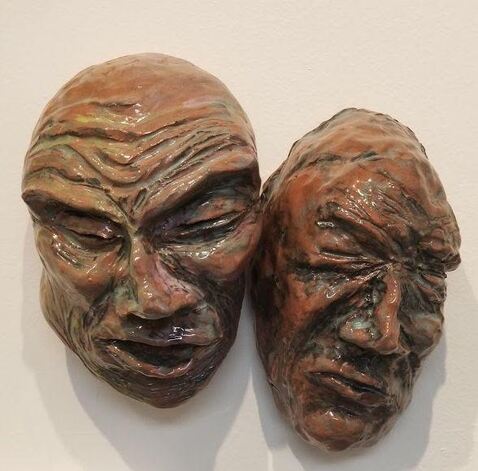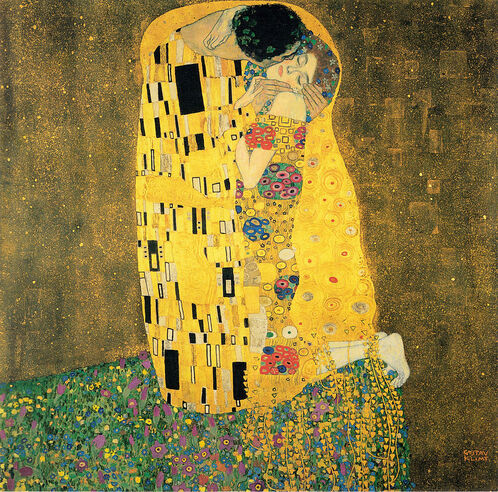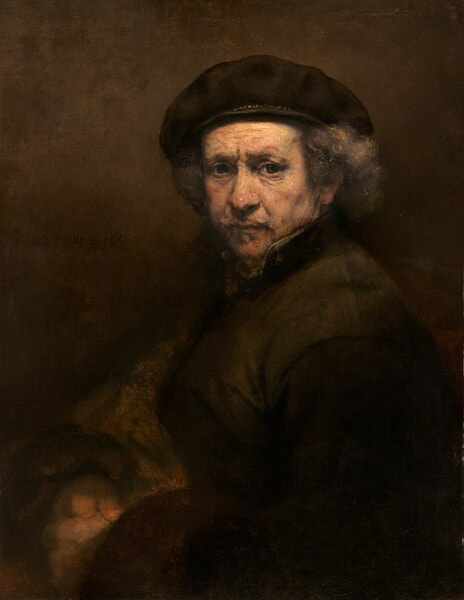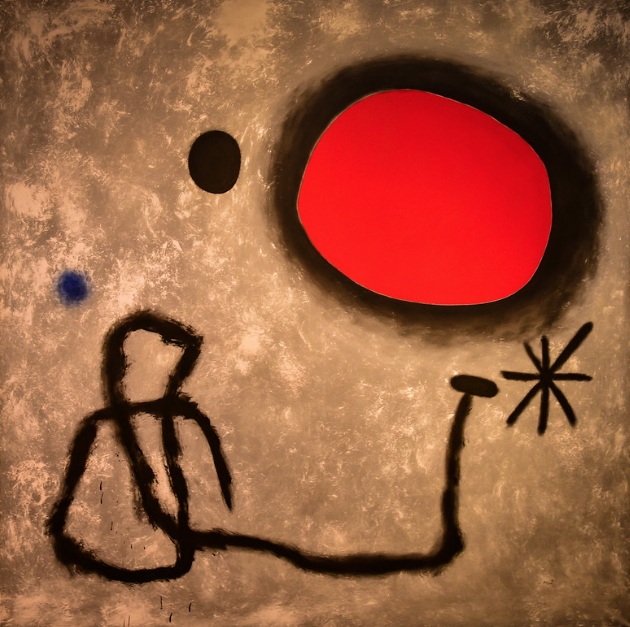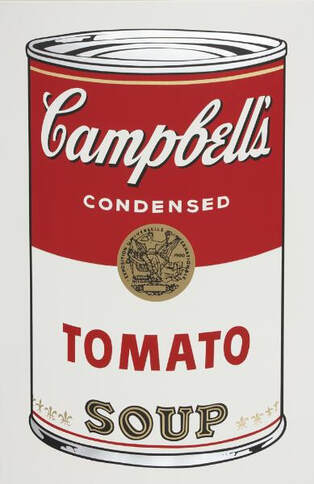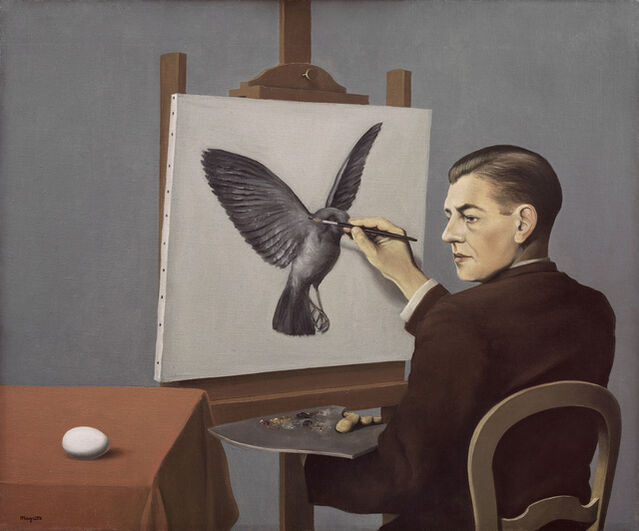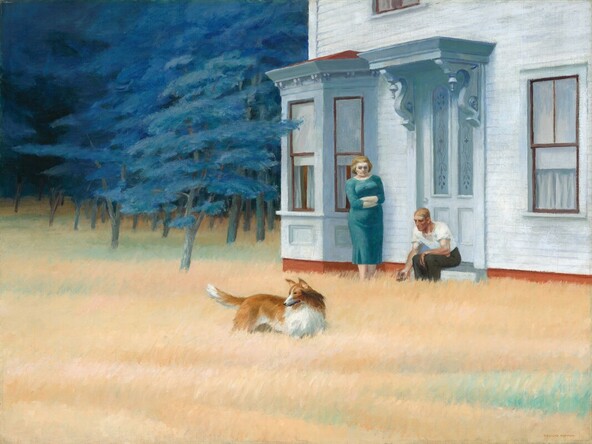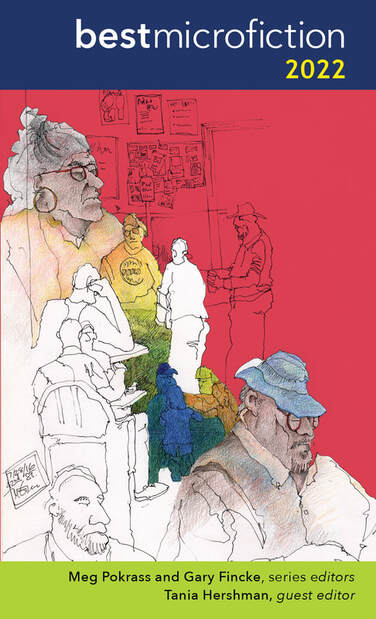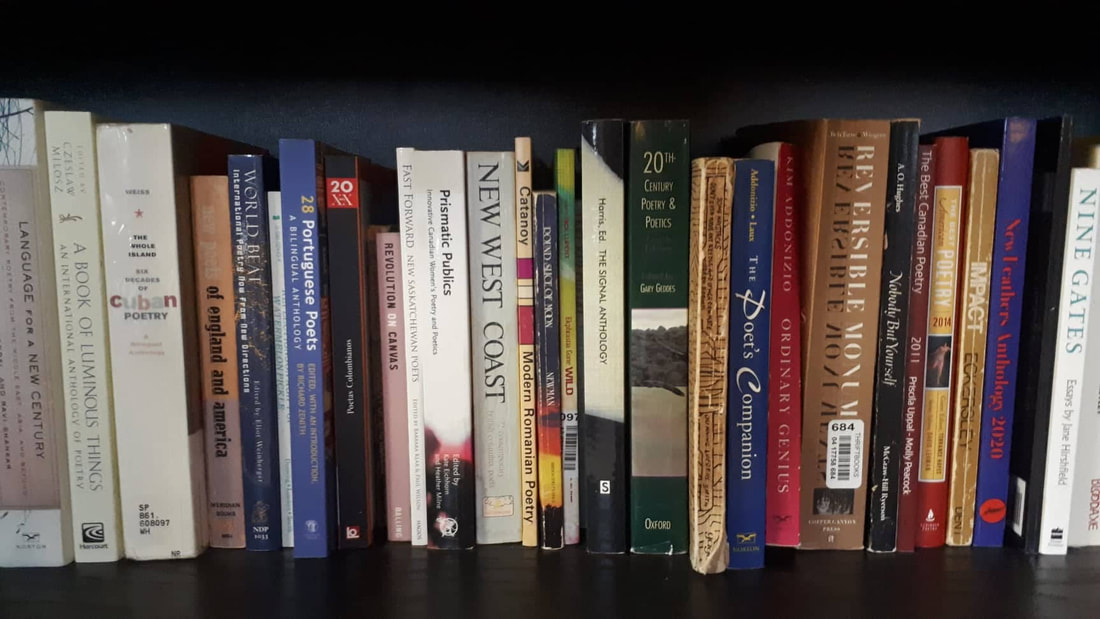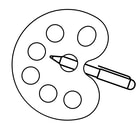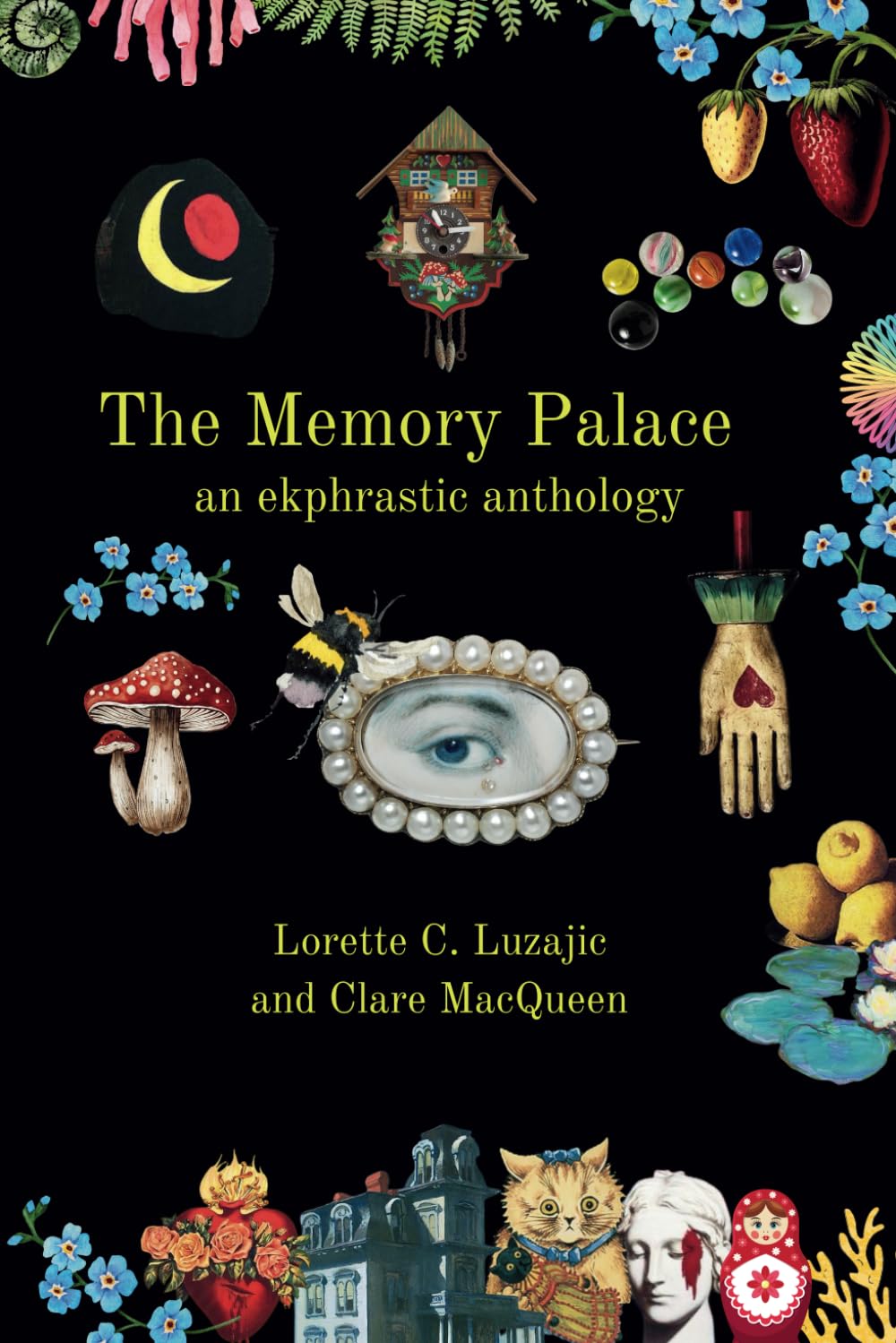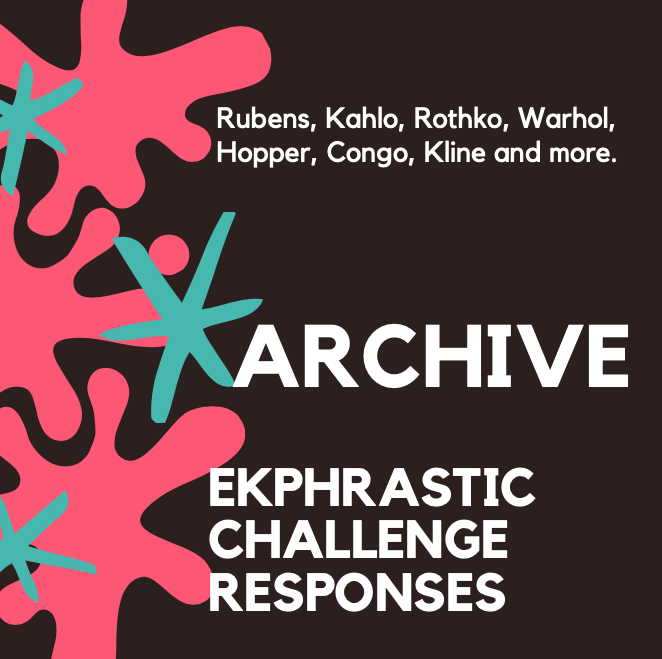|
Waiting Room For these faces dispossessed nothing changes only waiting gaps in synapse for these faces, brief hope, medication isolation drunk with poison languished time tables empty promise for these faces no arrivals or departures a mask of slumped despair, juxtaposed, lonely anguish for these faces for these faces in the waiting room eyes locked, wrinkled silence in darkness, separated in darkness, separated juxtaposed, lonely anguish empty promise gaps in synapse for these faces, waiting room. Daniel Brown Daniel Brown is a retired Special Education teacher. His poems include a variety of styles and subjects from Haiku to poems about music, art and social issues. Daniel’s work has been published in Chronogram, Jerry Jazz Musician And Mightier: Poets For Social Justice among others. He reads his poetry from time to time on his YouTube channel “Poetry From Shooks Pond” and is working on his first collection Family Portraits in Verse. He lives in Red Hook, New York.
0 Comments
Join us to write and sip online, just like meeting at the pub to talk shop, but from anywhere in the world! Painted Love: Wine and Art Write Night Saturday February 12, 6 to 8/8:30 pm EST (We end our workshops organically rather than abruptly at 8 pm.) The subject this time is in celebration of Valentine's Day, and we will examine several intriguing artworks from art history on the theme of love. Come ready to write! We'll be using some fascinating love-themed artworks for discussion and as writing prompts, along with creative exercises to inspire your ekphrastic writing practice. The following day, we have Love Stories, an afternoon session. You can come to both events- the artwork and prompts will not overlap. If you're new to ekphrastic writing, join us and find out why we're hooked! In addition to Painted Love and Love Stories, we have upcoming sessions on African-American artists for Black History Month, Women Artists, an ekphrastic flash fiction workshop, and many more. Our workshops are single session events with affordability, flexibility, and diverse schedules in mind. This way you can mix and match. Every workshop is unique (unless otherwise stated) so similar themed events will have different exercises, prompts, and visuals. Wine and Art Write Night Thursday April 7 from 5 to 7 PM EST
CA$30.00
Join us to write and sip online, just like meeting at the pub to talk shop, but from anywhere in the world! Thursday April 7 from 5 to 7 PM EST Come ready to write! We'll be using a range of artworks for discussion and as writing prompts, along with creative exercises to inspire your ekphrastic writing practice. If you're new to ekphrastic writing, join us and find out why we're hooked! Workshops may end fifteen minutes late. We leave it flexible to allow for natural discussion/sharing and timing. Those who choose can also gather 15 minutes early to connect and chat. Link will be sent out the day of the workshop. You are welcome to enjoy wine or spirits but tea and coffee or nothing is of course fine. No refunds for cancellations. We will happily move your name to another workshop if you have to cancel. Sunday Session April 10 from 2 to 4 PM EST
CA$30.00
The Sunday Sessions Let's gather monthly and spend Sunday writing poetry and flash fiction with creative, inspiring, and fun ekphrastic exercises. Lorette will host this workshop series from 2 to 4 pm EST. Lorette introduces several interesting paintings or other works of visual art in each session, from a wide range of artists and cultures. In addition to discovering more about art history and deepening your relationship with visual art, there will be a variety of writing exercises and approaches each session. This will be a great opportunity for the ekphrastic community to meet and mingle and work together. Join us! (Workshops often go over by 15 minutes. We prefer to end them organically rather than abruptly. Those who wish can gather 15 minutes early to chat with each other.) The small print: Zoom link will be emailed same day, prior to the event. No refunds for cancelled attendance. We can move you to another workshop if you can't make it. Thank you for supporting The Ekphrastic Review Settling Up I wanted beautiful things: to hold the earth- enware and smell its coffee beans, your face in the morning soft before waking, the latest new moon covert and still loved. I wanted couture too. I wanted god- et hemlines with fairytale endings, frothy tulle sleeves, purses in ice blues and cherry reds with gold chains to grasp and swing. I wanted to chase a life in the world that felt a little like a romantic comedy on a movie theatre screen: big and ordinary and out of reach, and come home to a life of aging Rembrandt’s self-portrait: the sunlight revealing our rumpled faces, our willingness to hold on to the shadows. Anna Talhami Anna Talhami is a poet and interdisciplinary artist with recent poetry in Rattle, Life as Ceremony, Hevria Magazine, and (F)Empower. She has performed her poetry across the U.S., including at the El Paso border for Artist Uprising, Radio Bloomsday, and the Theopoetics Conference. Her work has been presented at the Library of Congress, the United States Holocaust Memorial Museum, and elsewhere. Visit her at annatalhami.com Seeing Things A simple line painted with the brush can lead to freedom and happiness. Joan Miró The Exposition: Every day we see things, but poetry enables us to really "see things," to see what’s in the domains of the physical, the senses, and the imagination. We practice these in the “Seeing Things Poetry Workshop” which began in March 2019 at the Bright Hill Literary Center in Treadwell, New York. This workshop, under the direction of poet and teacher Robert Bensen, has continued in bi-yearly ten-week sessions through to today. Our group so loved our work together that we created “In-Between Workshops,” led by poet Pam Strother, because we wanted more. Some of us even met on our weeks off, and some of us have not missed a Monday night workshop for years. We were fortunate to have the library at Bright Hill for meetings through mid-March 2020, when we had to pivot to an on-line platform. While the change was disruptive and we look forward to meeting in person again, the Internet allowed poets to join us from considerable distances (The Netherlands, Florida, Washington, DC, and Michigan, for example), or to play the recorded discussions afterwards as long-distance observers. It also made it possible to invite distant poets to read in our “Tiny Desk Readings” series. We were honoured to inaugurate the series with Bright Hill’s founder, Bertha Rogers, and to continue with Liz Rosenberg, Carol Frost, Martin Willitts, Brendan Walsh, and most recently Rosalind Brackenbury. Renowned Elizabeth Bishop biographer and scholar Thomas Travisano visited twice, in person and later online, to enrich our knowledge of Bishop’s work as well. We are a collaborative group, working together on one another’s poems, supporting each poet’s vision with our reflections, all of us benefitting from the diversity of knowledge and perspectives that the members of our group offer. Our poetic range is great, and writing an ekphrastic poem as a collaborative effort based on a Miró painting, more boldly manifested our individualities. The projections and preoccupations, the obsessions and improvisations, make clear the individual strengths the poets bring to the task of translating a visual work of art to a verbal one. The Players: The members of our Seeing Things workshop come from many backgrounds: several teachers, a veterinary technician, a sneaker designer, a psychotherapist, a dancer, a biopsychologist, an organic farmer, a world traveler and citizen of the world, and several artists, just to name a few. From our educational backgrounds to our styles of writing, we are all unique. Let us introduce our players for this piece: David Bachner, Robert Bensen, Bhala Jones, Lynne Kemen, Michael Mirarchi, Michael Piercy, Pam Strother, Julie Suarez, Julene Waffle, Vicki Whicker, and Lisa Wujnovich. The Conflict: At a recent workshop, we decided to try something new. After sharing her experience with writing ekphrastic poetry and submitting several of her poems with the corresponding paintings that inspired them, Lynne Kemen was invited by Pam Strother to provide the next prompt for the group. Lynne “wanted to choose a painting that gave poets room to express what they saw. If I had chosen a more traditional painting, I felt it would limit writers. So I was looking for something abstract and thought of Miró. One of my favorite jazz albums by Dave Brubeck has Miró on the cover. I didn’t choose that painting, but I loved the idea of creating a poem with just some lines as inspiration.” That is, after all, as Miró states, from where freedom and happiness spring. The Prompt: A single abstract oil on canvas painting, 200 x 200.7 cm--the Joan Miró, Painting, 1953 which is on display at the National Museum of Western Art in Tokyo, Japan--is an image of a black squiggly line, human in shape, in the lower left corner of the canvas with an asterisk near the end of an extended arm-like line, a big red planet encircled with black above that on the upper right hand side of the canvas, and two other circles, one blue, one black, over the head of the figure--all on a neutral, mottled background. On first glance, it seems a simple, primitive painting, even child-like, but upon deeper inspection, it allows the viewer to sense some grander message. As Miró once said, "If you have any notion of where you are going, you will never get anywhere." And so, armed with our challenge, we embarked as we imagined Miró would, without specific direction in hopes of getting somewhere. Some of us were confused and still are when we saw Miró's work. When I first looked at the art, I saw a lunar eclipse and someone wishing they could hold the moon; others, such as Pam Strother immediately saw The Goddess in the midst of creation, others saw a joke of a politician. Some of us turned introspective or were just plain confused. Lisa Wujnovich thought of the year Miró painted this piece: “1953, the year I was swimming around in my mother’s womb . . . [it] conjured potential—desire, yearning to touch, as close as one’s own hand and as far away as the sun.” Julie Suarez said, “My responses to this painting ran the gamut from the ridiculous to the sublime. And I suppose Miró would have wanted it that way.” In fact, Lynne herself, who had fun with the poem, at first admitted, “What have I done?” when she sat down to write. In the end, each of us brought our own personality, our humor, our worry, and our whimsy to our ekphrastic poems. The results of the prompt were deliciously diverse. The Plot and Points of View: I / Etchings on the Wall Touch Tangelo sun seared against womb cave, spots floating in eye jelly, shimmering idea, from where petals overlap—like Eve, who ran her tongue across every leafed and satin body. How could she ignore the serpent, when she had tasted dew, a drop-- and there reflected her own hungry face. Dissolved with sun’s morning glare, fiery rays turned clarity mysterious, mist rising from cool water in her palm-- all that remained, a dot of exclamation. Lisa Wujnovich ** Musings on Miró Little chorister, what do you sing? a dirge for the dire earth, blazed upon by a huge sun? A lament for the blue planet, shriveled and nearly gone? An ode to a wayward star no one will wish upon? Is yours the last voice singing the last song? Courage, little chorister, sing on. Julie Suarez ** II / The Discovery Miró Miró on the Wall Confused. Start. Still? I’m leashed to bone. Gnashing red odds and ends. Time feels disturbed. Floating. Jetsam. My Miró Miró. On. The wall. My discarded dead matter dross searching. Well undone. Spain refuses remains scrap. This lumber. My son. Red sun. Soul wreckage lost cargo remains detritus waste. What waste. A rage of matter. I’m. Still. Hopeful. End. Vicki Whicker ** Joan Miró--Painting, 1953 If there’s a message in this painting I’m missing it. Don’t get exasperated, I chide myself. Start with what you see. The bright red ball—dramatic, dominant-- reminds me of a child’s drawing of the sun. But it doesn’t hover like the sun. Instead, Miró has wrapped the ball in a charcoal-gray circle and placed it in a hole. I feel as though I’m looking down into the caldera of a volcano that’s been squeezed into a crater of the moon. The mostly beige surface of the canvas even has a lunar, splotchy-cheese quality, punctuated by what could be passing planets—two of them: one pure black, the other smaller and blue. Or maybe the small blue shape is the shadow of the larger black planet. If it is a planet. If this is the moon. I can’t tell. Nor can I tell what the eight-point black shape is supposed to be. A star? But again, a child’s crude version of one, the image reminiscent of those spiky metal objects we used to call knucklebones in the game Pick Up Jacks. Miró being playful? The Dadaist trickster making fun of us? There is one more shape at the bottom of the painting, a squiggly black line I ponder in three differing ways: First, it reminds me of a snake, a cobra uncoiling, its head raised and poised to strike the jack-like star (assuming the shape is a star). Then I think the squiggly line might be some weirdly bent Miró version of male genitalia extending from scrotum to glans. Or maybe the crooked black line is a mangled wire coat hanger Miró decided to throw into the mix just for the hell of it. He strikes me as an artist mischievous enough to do all of this: To mess with my commitments to realism, logic, and convention. To toy with my sensibilities. To have me search for a message not there to be found. To offer no meaning except what my imagination can construct from his textures, shapes, and colours. David Bachner ** Miró What I am seeking... is a motionless movement, something equivalent to what is called the eloquence of silence. Joan Miró Miró's motionless movement speaks eloquently in its silence. He imbued his painting with meaningful meaninglessness. Blast of red adds color to colourlessness. Shapes in Miró's painting emerge from shapelessness – tangled thread unravels into a linear progression, asterisk and fuzzy blue orb gain sharp edges, become well-defined ovals. Can a painting describe the indescribable? How does a poet give voice to the unspeakable? Michael Mirarchi ** III / The Journey Joan Miró - Painting, 1953 at National Museum of Western Art - Tokyo Japan sunward stretching Leonard lengthening limbs marbled massive thighs, veiny legs tee-shirted stomach straining rules refer to others only losers look on stars stare, too, as spiders spin penultimate, prancing prattle Lynne Kemen ** The Writing is on the Wall Ultimately threaded and consciously woven There is a willful expression a current flowing Where women and men share a common reality In the light of the sun demanding presence Revealing strength shining as a distant star A relative aim of the universe is to combine Love and Justice into a life of virtue Measuring the distance to the heart Signing this primitive belief we are not alone Quickening: The first natural sensation Grace appeared in the East as a Star Looking up startled shimmering in the dark This relationship encountered defies explanation Reaching out an open hand capturing the moment A thought came to mind not of mine own * Friend Prudence: The use of reason to govern oneself By extension we are related to the stars This carbon body a flicker of dust situated On a small circular plane of existence waiting Contact an eternal whisper of the past calling In this cave an ancient conversation begins anew Michael W. Piercy ** The Middle of the End of the World This is the middle of the end of the world not the beginning. At the beginning the Deniers shouted down the Believers and they all went dancing down the street not paying attention. As the sun swelled up and the sky clotted with noxious fumes the middle of the end of the world began and men tried all the tricks they knew to stop it. All tries were useless and some downright silly. In a final try a desperate man from New Jersey tied a long rope to a hammer and threw it hopefully at the sun. Like many he was quite mad by then. Though his hammer missed the sun he firmly believed it left an asterisk in the sky. The end of the end of the world will come when the black moon crashes the sun or the acid fumes etch themselves across the last tiny patch of heavenly blue. And then the face of God, looking down at this from the upper left-hand corner, will disappear and we will never know whether as God watched God was laughing or crying. Bhala Jones ** IV / Part of the Final Creation Moltes Gràcies, Joan Miró, for Barcelona’s Sky of hammered copper, and red enamel sun with scorched corona-- like stuff we did in sixth grade with Mister, Mister, Mister, what’d we call him? He of ruddy face and coppery skin who sprinkled powders on a copper disk, then baked it in a little kiln he brought from home. Could we try? Through the glass dome, the rose pin I made for my mother melted to a scarlet blob with a burnt rim. Mister Hm-hm said, Good job. The red blared like a cop-car beacon chasing trouble and a frisk. My mother paid the teacher a roll of coppers from her kitty, so we skipped milk that day. But it wasn’t pretty. Why did I bother? She took a good look and gave it back, so I scratched myself on it as a stick figure, foot stuck out to boot the sun’s red eye, added a couple black and blue planets and a spiky dark star: an asterisk for luck. For all I owe you, Joan Miró, this is the best I can give back. Robert Bensen ** Stealing Moon Since Sun would be too angry-hot and would never fit in the shoe box of treasures under my bed, I reach, instead, on my tippy toes and pluck the moon from her bower of sky, a pet I might keep for company. I ball her up in my hands, stroke her, smooth her, soften her edges like clay until she is tight, compact, full, and round, work her grey body down until I can tuck her into my pocket like a thief and steal her home. The sky is black except for aimless love-sick fireflies and the stars burning their own fire, more gas than mass or dust or rock. But the moon wriggles in my pocket, bounces and pulls too much, and won't stay her shape. I think of my mother who would know I've put another living thing in my coveralls and would give me that sideways look that says, "You know better," and I do. So I pull Moon out, press her corners smooth again and pitch her back home into her pocket of sky where she'll wait out the night and disappear with the pink skirts of dawn and say, "See? Isn't this better?" And, I admit, it is. Julene Waffle ** Ode to Creation Goddess of the multiverse reclining elemental cosmosthetic basking in nativity hand outstretched willing the planets to wake up to eternity Queen of the desert and forests not yet born Guardian of stars abiding in first light Your conception unfolding we who are immersed in these wonders thank you Pam Strother The Resolution: We eat, we sleep, we work, we dream, we write, and yet while we are doing these things and writing our poems and even thinking of the same art, we are doing so in our own unique ways and through different lenses, or “prisms and filters” as Lynne said. In this collaborative effort, we all started at the same place, but where we took the prompt led us so many different directions. As Michael Piercy said later in an email, “It was great to see how truly different and diverse we all are.” We had the “freedom,” as Bhala said, to draft, workshop, email, research, and offer final draft suggestions until our play's plot worked itself out on this stage. Inspired by the prompt, we inspired each other, which is nothing new for this group--but this idea of working together on a single project rather than standing on our own was new, exciting, and enlightening. Miró said, "The painting rises from the brushstrokes as a poem rises from the words. The meaning comes later." Finding meaning through exploration is exactly what happened to us. And if I could, I would buy this Miró painting and hang it on the wall where I would see it every day, not because it is beautiful, not because it is thought-provoking, not because it is a Miró, but because it is a reminder that we all witness the same world, warm under the same sun, admire the same moon, but we see the world in very different ways, and all of those ways are valid and valuable. What matters is not how we interpret the world, but rather the fact that our struggles, our interpretations, our creations exist equally and simultaneously in their varied and wonderful ways. As David Bachner said at the end of our workshop on this project, this collaborative effort just accentuated our workshop itself; this project was a direct enactment of our group’s title, Seeing Things. Whether we understood the art or not, he said later, “the more I explored and tried to describe it, the more I appreciated the openings Miró gave me to see, think, and feel.” And isn’t that what art is all about? Julene Waffle Joan Miró - Painting, 1953 at National Museum of Western Art - Tokyo Japan The Poets: David Bachner: [email protected], Retired College Professor and Dean Robert Bensen: [email protected], Retired College Professor and Small Press Publisher Bhala Jones: [email protected], [email protected], Dancer and Choreographer Lynne Kemen: [email protected], Retired Biopsychologist Michael Mirarchi: [email protected], Attorney Michael W. Piercy: [email protected], Stretcher Fabricator, Veterinary Technician, and Artist Pam Strother: [email protected], Retired Psychotherapist Julie Suarez: [email protected], Retired College Professor Julene Waffle: [email protected], Secondary English Teacher and Business owner Vicki Whicker: [email protected]. Sneaker Designer Lisa Wujnovich: [email protected], Organic Farmer, Mentor, and Herbalist Works Cited Miró, Joan. Painting, 1953. Masterpieces of the National Museum of Western Art, Tokyo, 2009, cat. no 120. https://collection.nmwa.go.jp/en/P.1965-0011.html. “Joan Miró Quotes.” AZ Quotes. https://www.azquotes.com/author/10188-Joan_Miró. My Last Can of Tomato Soup Three-day old coffee has thickened into the slush of cold trafficked streets and I can’t bring myself to throw out the moldy grounds I’ve grown fond of. The cuckoo clock bleats the hour and I feel time slow to the cautious crawl of cars on new ice. I see the Sunday paper from the window frozen into the gray grass like a dog’s bone. The heater drones pathetically like a child’s incessant chatter while a movie plays on TV. An actor, colorized and sickly fights off the invading body snatchers and screams they’re here, they’re here your souls are in danger you’re next, you’re next and I believe him. I’ve seen this movie before. On the counter is my last can of tomato soup strangely monolithic like it might have been found in a pharaoh’s tomb. This magic elixir once warmed numb fingers after a long day of snowmen and snowballs. This was my mother’s talisman when I sneezed, the familiar can I snatched from the shelf knowing the gold letters before I knew the word. But I have begun to suspect that Warhol told the truth, that this can, red and white, promises more than it delivers. It is really only tin and paper and enriched tomatoes masquerading as love and warmth and caring, a child’s myth that it is time to give up. And yet here, in the midst of another barren winter, I open the can, spoon the thick soup, and slowly, intently, stir. Gayle Moran Gayle Moran lives in Houston where she teaches communication skills to engineering students at Rice University. Don't miss the amazing variety of stories and poetry inspired by this Nielsen painting. Click on image to read selected responses.
Once again, we thank each and every one of you for participating in our ekphrastic challenges. It is astonishing what marvellous works spring from each challenge. With the number of responses we receive growing constantly, it gets more and more difficult to choose from so many. This one was particularly tough and many amazing works were left out. We do our best to choose a variety of styles, to balance giving space to faithful contributors and new voices, and to pick wide perspectives on the artwork. It's not easy. Thank you for being part of this amazing project. Cape Cod Evening On the outskirts of Truro, where the town gives way to a locust grove, I dive deep into the details of early evening. Sat on the porch in undershirt and slacks, I bathe in autumn breeze, molasses sweet: the same air that disturbs Josephine’s skirt and ruffles the brush strokes of Bonnie’s fur. Just as the day turns dark, she cocks her head, perhaps distracted by the nearby trill of a whippoorwill, and watches through grass in need of a cutting towards the wood, ears and tail up, guarding her property. Later, before bed, one last cigarette. The heady scent of freshly ground coffee. A little reminiscing on old friends. An emergency radio broadcast: an escaped convict, at loose in the woods hunting for a warm place to take shelter. Ross Thompson Ross Thompson is a writer from Bangor, Northern Ireland. His debut poetry collection Threading The Light is published by Dedalus Press. His work has appeared on television, radio, short films and in a wide range of publications. Most recently, he wrote and curated A Silent War, a collaborative audio response to the COVID-19 pandemic. He is currently preparing a second full-length book of poems. Congratulations to Olivia Wolford, one of our nominees for Best Microfiction. Her story, "Star Swallowed" was chosen as a winner to appear in the Best Microfiction Anthology 2022. The series was founded by Meg Pokrass and Gary Fincke, and this year's judge and guest editor was Tania Hershman. We are over the moon to see The Ekphrastic Review represented in this fantastic series. Last year, Cyndi MacMillan's story, When Alice Became the Rabbit, was chosen. Congratulations to ALL of our nominees, this year and last year. Congratulations to all the authors chosen for this year's anthology. You can find the complete list here, and learn more about the series. READ: Star Swallowed, by Olivia Wolford https://www.ekphrastic.net/ekphrastic-journal/star-swallowed-by-olivia-wolford ** Best Microfiction Anthology Awards 2022 (Nominations for Works Published in 2021) Star Swallowed, by Olivia Wolford https://www.ekphrastic.net/ekphrastic-journal/star-swallowed-by-olivia-wolford Hollow, by Christina Pan https://www.ekphrastic.net/ekphrastic-journal/hollow-by-christina-pan Lost Rivers, by Jamie Brian https://www.ekphrastic.net/ekphrastic-journal/lost-rivers-by-jamie-brian The Moon Practises the Art of Night Photography, by Marjory Woodfield https://www.ekphrastic.net/ekphrastic-writing-challenges/selected-challenge-responses-garabet-yazmaciyan Elusions, by Kerfe Roig https://www.ekphrastic.net/ekphrastic-writing-challenges/selected-challenge-responses-garabet-yazmaciyan At the Pool Party for My Niece’s Graduation from Middle School, by Nancy Ludmerer https://www.ekphrastic.net/ekphrastic-journal/at-the-pool-party-for-my-nieces-graduation-from-middle-school-by-nancy-ludmerer Red is Too Cliche I see her. It is the third day she is walking by my flat. Today she got a little closer than yesterday. And today, she is carrying bougainvillea. * I look at the bougainvillea branch bearing too many flowers outside my window. It is a good day to write. I go to the computer with a glass of water and start typing. Today, the words come flowing like a flood. It is almost as if somebody recites it to me in hushed tones from insides my head. Somebody who resides inside my head. I hit save. I do not edit this draft. But I read. And reread. * I reread the legend of Kannagi. I feel sad for her. I have driven past the temple dedicated to her name, back home. It was always full of women. All kinds of women. Too much women. So too much flowers. Strings and strings of jasmines. * This is too much. Should I open the window and ask her what she wants? I see the bunch of ixora in her hand. But I don’t like ixora. So I go to the computer to write. Today, there is no voice. I feel lonely. I want to paint. * Kannagi sold her first painting. A Neo-Dada art. She juxtaposed a newspaper, a birth control pill, a breast and an anklet. Because blood is red and red is too cliché, she used maroon and black. Like a mad woman she threw buckets of maroon at the painting. And smudged it with a black paint brush. And when she was done, she sprinkled a diluted white with fingers. Like a mad woman. She went home with a full heart. But her boyfriend was on his knees. With a bouquet of red roses. And a ring. She hated red roses. She hated red. She had just started having a good day. * It is a good day. I go for a morning jog and come back. I want to write. What do you do when you want to write but don’t have the words? I take a sip of ginger tea and look out the window. She is there. She has come again. Today she is standing outside my door. And today, she is carrying lilies. Ding-dong. That’s my doorbell. I open the door. Her face looks scared. And helpless. We stare into each other’s eyes for fourteen seconds. ‘What now?’ she asks. ‘I – I don’t know’ I pull out the hair stick and let my hair down. ‘Come in?’ She walks straight to the study. ‘These are for the anklet’ she smiles and leaves the lilies near the computer ‘appreciate it’. She sends her finger through the spines of my books. Classics. Biographies. Art. She stops. ‘I want to live’ she says, ‘please let me live’. Her voice, so delicate and soft. I hold her hands and I kiss them. She looks beautiful. Like a goddess. * ‘Is she a goddess or a human, Kannagi,’ I asked my grandmother once, ‘according to the legend?’. ‘Why does that matter?’ ‘That much chastity…for a human?’ ‘That much anger…for a goddess?’ ‘But a human can’t tear a breast and fling it at a city!’ I said, touching my chest. ‘But a goddess can’t love like a woman!’ she said, touching her heart. * How would you know if it’s your heart or your chest that aches, she wondered. She had a pain in her chest, Kannagi. If the pain is fluctuating it is probably the heart, that’s what she had heard. So it was her heart. It was bleeding. She was not alone; she was with child. So she said ‘yes’. But she asked him to take the roses out of her sight. And now she will have to fly back home. A new canvas. * The canvas is very thick. The red paint does not bleed through it. I am painting a slut. Ding-dong. She has come again. I open the door. I see jasmines in her hair. But there is a dagger in her right hand. ‘Kannagi?’ ‘What did I ever do to you, you crazy bitch?’ she jumps on to me and I fall down. She gets on top of me, pulls the string of jasmines from her hair and wraps it around my neck. ‘Kannagi!’ I shout. ‘Kannagi, stop!’ ‘You made me pregnant?’ she screeches, ‘you made me get married to that bastard? And fly back home?’ she cackles. Like a mad woman. ‘I pleaded you to let me live! I pleaded!’ she howls as loud as she can. Then she wails, ‘I only wanted to live...to paint… paint!’. She covers her face with her hands and weeps. Her dagger slips down and I swiftly pick it up. My heart races as I raise my hand to stab her in the back. But I can’t. I can’t. Because I made her. She is mine. We do not move for fourteen seconds. We stare into each other’s eyes. ‘Fuck you!’ she shouts and flings her breast at my study. Then she stabs herself. With my hand. * Kannagi moved back to her ancestral home with her husband and unborn child. Ciara Mandulee Mendis This story is inspired by the legend of the goddess Kannagi. You can learn more about her here. Ciara Mandulee Mendis is a Sri Lankan writer. Her debut collection of short stories titled The Red Brick Wall was shortlisted for Gratiaen Prize 2020, the most coveted award given for Sri Lankan writing in English. She holds an M.A. in English Studies from University of Colombo. She is employed as Assistant Director (Literature & Publications) at the Department of Cultural Affairs, Sri Lanka. Please visit our virtual bookshelves from time to time.
We have an Ekphrastic Bookshelf and a Contributor Bookshelf. Treat yourself to a new book by one of our writers or supporters. Ekphrastic shelf listings have a minimum of three ekphrastic works or are entirely ekphrastic. Contributor listings can be on any topic by writers published here. There is an amazing selection of gems by your favourite TER writers. Check it out! |
The Ekphrastic Review
COOKIES/PRIVACY
This site uses cookies to deliver your best navigation experience this time and next. Continuing here means you consent to cookies. Thank you. Join us on Facebook:
July 2024
|
